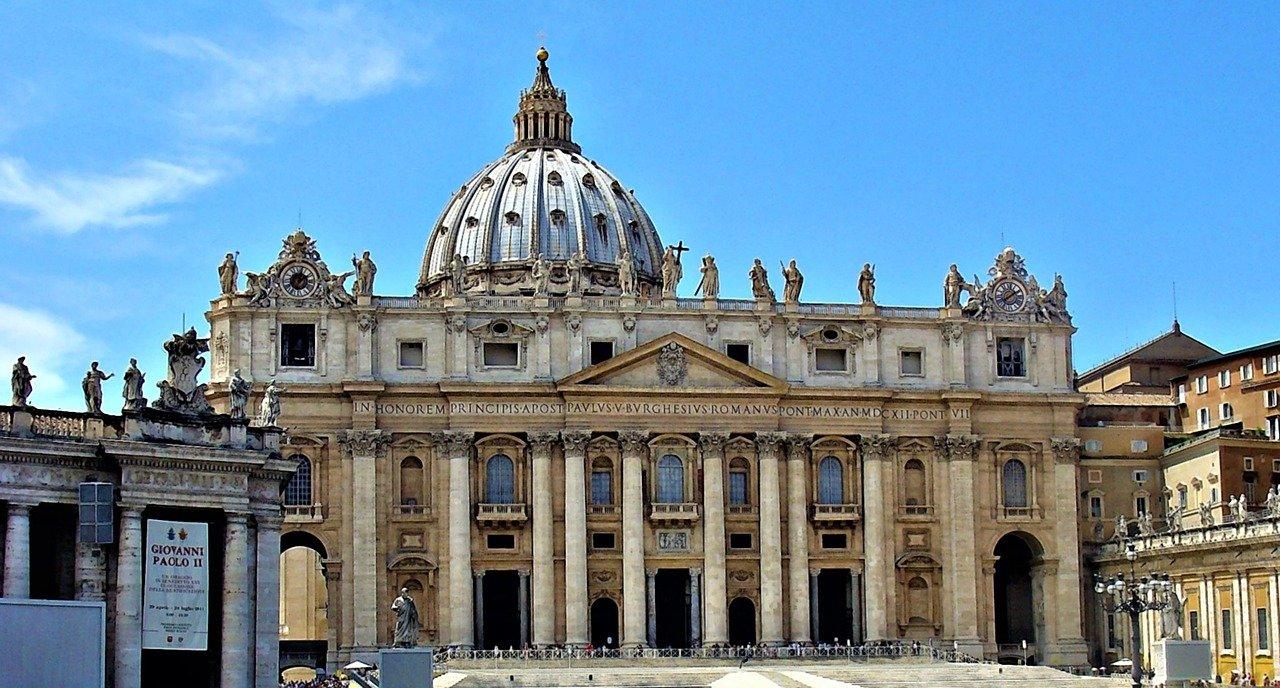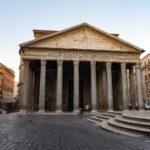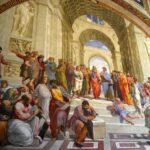The great Basilica of St. Peter, with its splendid and imposing dome suspended from the ceiling of Rome, is the most important in the Christian world. It is the monument that manages to bring together, in one place, the faithful and art lovers. It is dedicated to St. Peter, the first pope and head of the Church, among the apostles. It is one of the most visited places in the Eternal City, both for its artistic beauty and for hosting the main manifestations of the Catholic faith.
In its imposing square, Christmas and Easter Masses are celebrated, which are very popular, as well as the rites of Holy Week, the proclamation and burial of popes, the opening and closing of jubilees and the canonisation of saints. Therefore, for those who visit Rome, the visit is not over until they have taken the opportunity to admire the basilica, the square and the columns that embrace it. A destination for pilgrims from all over the world, a meeting place for the faithful, artists and scholars, it is known throughout the world. It is the largest papal basilica in Rome and is one of the largest churches ever built.
History
To find out about the origins of the basilica, you have to go back in time almost 2000 years. It is no coincidence that the basilica is located here, as it was built exactly where the apostle was killed and buried. The work was started by Pope Julius II in 1506 and completed in 1602 by Paul V. The new building, however, stood on top of another pre-existing building, erected in the 4th century by Constantine, precisely where the Circus of Nero existed, the place where St. Peter was allegedly crucified and buried.
The great Basilica of St. Peter is dedicated to Peter, the chief of the apostles, the first pope and head of the Church. Named Peter by Jesus himself, because he chose him to be “the stone” on which to build his Church, he was the greatest entrepreneur among the disciples. He was arrested and miraculously released and left Jerusalem to go to Rome (which was the centre of the Roman Empire).
When Emperor Constantine decided to build a great basilica dedicated to St. Peter in the 4th century, he needed a solid base: his architects created a way to beat the Vatican hill. Thus was born the first cathedral, which has been the physical and spiritual centre of Christianity ever since.
Over the centuries, through various pontificates, the long process began which, in about 200 years (and with the help of many artists such as Bramante, Michelangelo and Bernini), led to the completion of the reconstruction of Constantine’s original church. From an artistic point of view, St. Peter’s Basilica represents the triumph of the admirable Roman Baroque, which clearly indicated the desire of the Curia to present itself to the world in all its magnificence.
The exterior
St. Peter’s Basilica is a reservoir of works of art, with hundreds of exquisite marble sculptures and the tombs of illustrious figures (among the authors are Canova and Bernini).
The façade of the temple is entirely in white marble with well-ordered columns and pilasters, which frame the central portico. Two side arches open from them: the one on the left goes towards the Vatican City. There are 9 windows with balconies, the most important in the centre, known as the Papal Blessing Window, where the Pope exposes himself to speak to the faithful. Above the windows there is a balustrade which supports 13 statues.
The portico leading to the interior has five access doors, each with a different history. The best known is the “Holy Door”, which is only open in Jubilee years, while the Filarete Door, over 7 metres high, is one of the few remaining wonders of the medieval basilica. And, of course, Michelangelo’s great dome, 119 metres high, covers the basilica – also surrounded by smaller vaults in the Gregorian and Clementine chapels.
The interior
And finally, there is the Dome of St Peter’s, which is one of the symbols of Rome. To see the Eternal City from above, you have to climb about 133 metres. This is something you should do at least once in your life! The dome, idealized by Michelangelo, is surprisingly large and harmonious, characteristics that are appreciated during the tiring – but rewarding – ascent of the dome, which allows you to admire its beauty up close, both inside and outside.
The dome of St. Peter’s is a masterpiece of man’s creative mind and, over time, it has become the symbol of the Church of Rome. It is the place where many pilgrims and visitors from all over the world arrive every day.
It is accessible from the portico of St Peter’s Basilica. Unlike the entrance to the church, which is free of charge, there is a charge for climbing to the top of the dome. It is possible to climb the stairs, or by lift. The stairs are numerous, but the view of Rome from the Dome of St. Peter’s is unparalleled!
Michelangelo’s Pietà Among the many works of art inside and outside the Basilica, there is one you cannot miss: Michelangelo’s Pietà (a work that has been surprising for centuries, both technically and emotionally).
Video
The Arches
The brilliant architecture of the arches was commissioned by Pope Alessandro VII and designed by Bernini. The arches are arranged radially in four rows of 284 columns, whose diameter increases progressively, thus managing to maintain the proportional relationship between the spaces and the columns, even in the outer rows. Thanks to this feat, the viewer, when accessing the porphyry discs around the obelisk, can see the arches as if they were a single row of columns, a spectacle of architecture by the masters of the art.
When you walk through the entrance door, the emotion is palpable, the magnitude and splendour of the great construction is breathtaking! The immensity of the spaces is such that it loses its sense of proportion, like the two little angels holding the holy water at the entrance (at first sight they seem small, but as you approach, you see that they are more than 2 metres high). It is a kind of mirage that is manifested in all the works of art scattered around the basilica.
Funerary monument of Pope Alessandro VII
In the left-hand corridor, the suggestive (and at the same time disturbing) funerary monument of Pope Alessandro VII, which is a spectacle of Bernini’s intelligence, represents a giant skeleton that lifts a veil made entirely of marble, revealing the door to the afterlife, while the other hand holds an hourglass, reminding us of how ephemeral the time of human existence is. It is very moving, both for the work and for the meaning it expresses.
Bronze sculpture of St Peter
From the centre of the basilica, on one side, it is possible to see a relatively small bronze sculpture of St. Peter, which contrasts with the colossal scale of the wonders that surround it. The statue depicts the apostle seated in prayer and his feet are literally worn away as pilgrims pass their hands over the sculpture in devotion for so many centuries. The enormous dome of the basilica is covered with a huge mosaic, splendid in its entirety, like a radiant golden stucco. Moreover, although difficult to see from below, almost all of these decorations are ceramic mosaics, so small that from a distance they look like real paintings.
Tomb of Saint Peter
Visit the tomb of St. Peter and the necropolis beneath the Vatican Basilica. The tour through the Vatican Cemetery is, in fact, a walk through the centuries; and this is another important aspect of the visit to the Basilica. In fact, it is a visit to the tomb of St. Peter, along the ancient dirt road leading to the tomb of the Prince of the Apostles, which crosses a Roman necropolis located under the floor of the Vatican grottoes, just below the central corridor of the Basilica.
The archaeological research was an unprecedented feat that made it possible to locate Peter’s tomb, which had remained inaccessible and untouched for almost two thousand years, on the high altar of the basilica. It was in a humble tomb, dug on the southern slopes of the Vatican hills, just opposite the Circus, that the fierce persecutions against Christians took place during the time of Emperor Nero.
A modest tomb on which, a hundred years after the martyrdom of the apostle, a small funerary shrine (formerly called the “trophy of Gaius”) was built, indicated Peter’s tomb to the first Christians. Before Constantine, the tomb was the destination of pious pilgrims, as shown by the various engravings painted on a wall, a place of worship.
On a small piece of plaster, the following Greek letters were engraved: PETR ENI. The engraving interprets the expression “Petr[os] enì”, which means “Peter is here”.
How to attend Mass with the Holy Father?
To attend the Wednesday morning general audience and other papal ceremonies, it is necessary to reserve a ticket (completely free of charge) at the Papal Prefecture. The entrance is through the Bronze Gate and the ticket office is open on Monday from 9am to 1pm and on Tuesday from 9am to 6pm.
How to get there
The Basilica is open daily from 7am to 7pm from April to September and from 7am to 6pm from October to March. People dressed indecently are not allowed to enter. Entry is free, but it is possible to pay a ticket for priority entry without queuing.
Piazza San Pietro, 00120 Città del Vaticano, Vatican City State
https://goo.gl/maps/sT19r1wPjxWcWATS6





